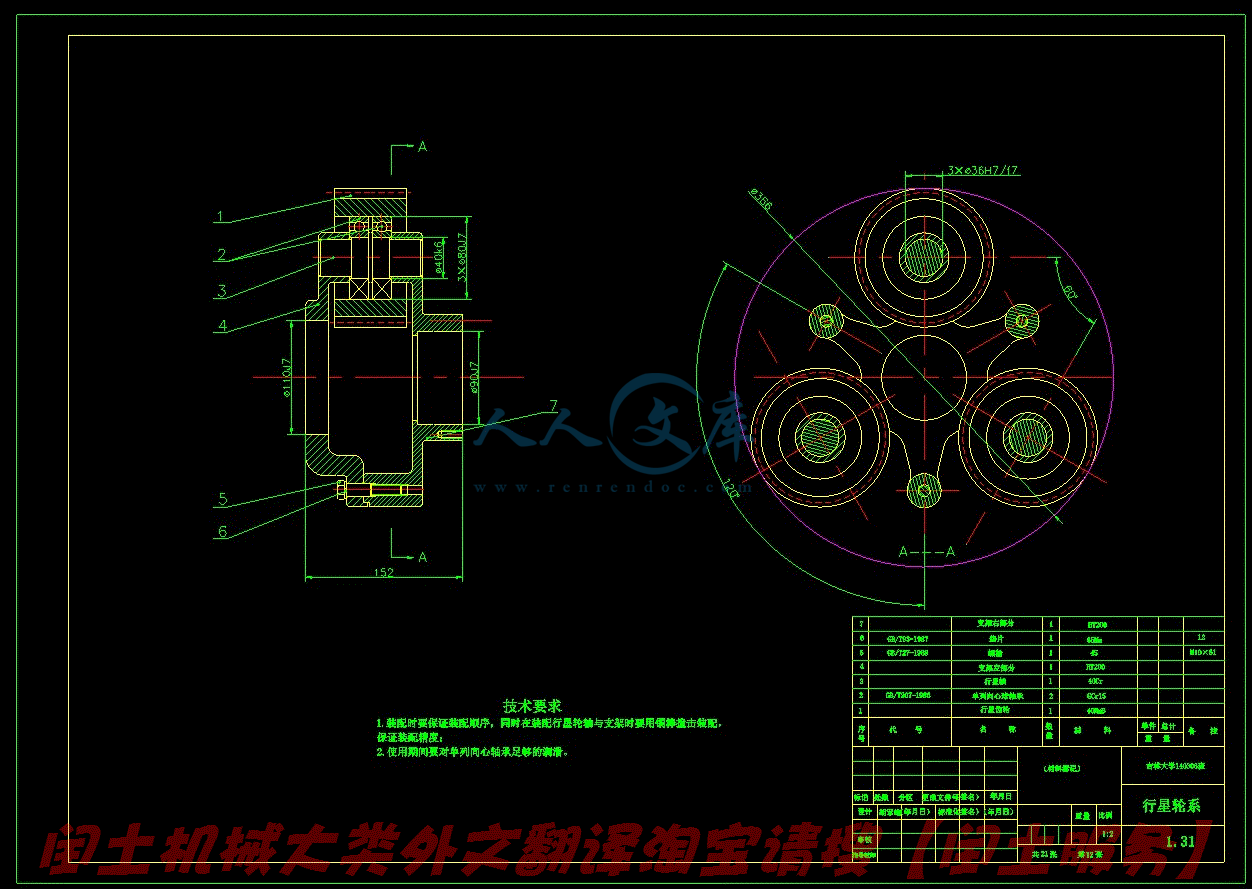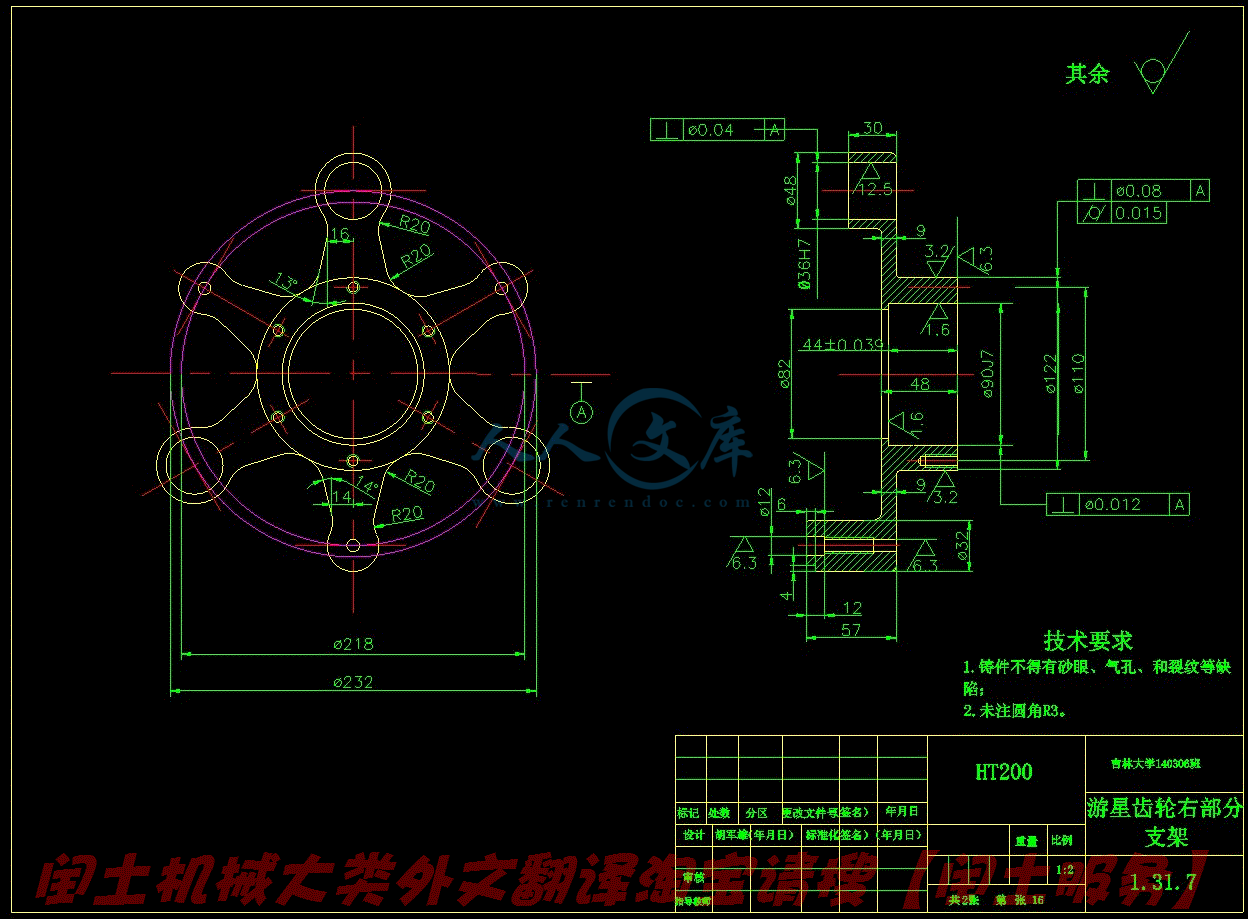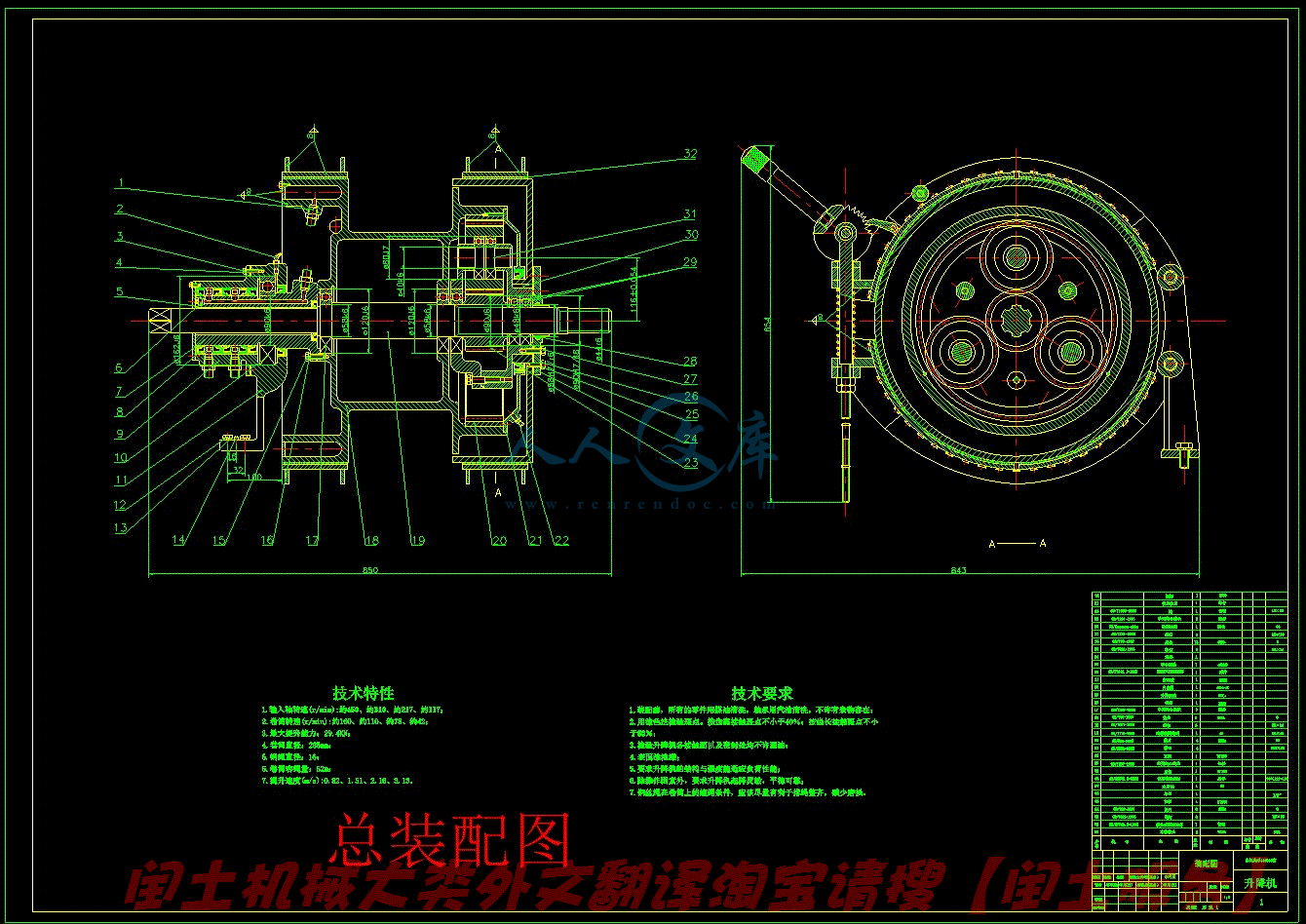资源目录

压缩包内文档预览:
编号:6035129
类型:共享资源
大小:6.01MB
格式:RAR
上传时间:2017-10-23
上传人:闰***
认证信息
个人认证
冯**(实名认证)
河南
IP属地:河南
50
积分
- 关 键 词:
-
xy-4
岩心
钻机
升降机
设计
- 资源描述:
-



















- 内容简介:
-
Journal of Stored Products Research 42 (2006) 226239during 1999 and 2000. Five locations per elevator were observed; the boot pit, dump pit, headhouse, railARTICLE IN PRESS/locate/jspr$This study reports the results from research only. No recommendations are given or implied by the US Departmentof Agriculture, Kansas State University, or Oklahoma State University.C30022-474X/$-see front matter r 2005 Elsevier Ltd. All rights reserved.doi:10.1016/j.jspr.2005.02.003Corresponding author. Tel.: +17857762783; fax: +17857762792.E-mail address: arthur (F.H. Arthur).area, and tunnel. When a grain residue was found, the quantity was estimated and a sample taken. Adultgrain pest insects and beneficial insects were removed and identified. Cryptolestes spp. and Sitophilus prised about 80% of the pest insects collected. The density of Cryptolestes spp. appeared to rapidlyincrease in spring but remained low at other times of the year. The density of Sitophilus spp. in the residuesincreased consistently through the warm months, peaked immediately after the warmest month, anddeclined gradually as ambient temperatures cooled. Pest insects were observed in 41.7% of the 1575samples examined, and beneficial insects were collected from 5.1% of the samples. Residue samples takenfrom the elevator boot pit and tunnel areas contained a greater density of pest insects (all species combined)than other locations. About 42% of the residues were estimated to be smaller than 1.5kg, and samples fromthese residues contained more insects per sample than did samples from larger residues. Anisopteromaluscalandrae comprised 88.9% of the total number of beneficial insects found. Beneficial insects were observedinfrequently, and mean populations exceeded 1insect/kg of residue in any month at only two of the nineelevators. Results from our study showed that grain residues within the elevator often contain pest insectsInsect populations in grain residues associated withcommercial Kansas grain elevators$Frank H. Arthura,C3, David W. Hagstruma, Paul W. Flinna,Carl R. Reedb, Thomas W. PhillipscaGrain Marketing and Production Research Center, USDA-ARS, 1515 College Avenue, Manhattan, KS 66502, USAbDepartment of Grain Science and Industry, Kansas State University, Manhattan, KS, USAcDepartment of Entomology, Oklahoma State University, Stillwater, OK, USAAccepted 18 February 2005AbstractGrain residues in nine commercial elevators in Kansas were sampled monthly for insects in grain residues60-day incubation period.ARTICLE IN PRESSF.H. Arthur et al. / Journal of Stored Products Research 42 (2006) 226239 227In a recent survey of insects collected from grain in the bottom of elevator silos and fromdischarge spouts (Reed et al., 2003), Cryptolestes spp., Rhyzopertha dominica (F.), Oryzaephilusspp., Tribolium spp., and Sitophilus spp. weevils were observed consistently over a 2.5-year period.In the discharge spouts, Cryptolestes spp. comprised 65% or more of the insects collected in fourof the five sampling periods (6 months each). Rhyzopertha dominica comprised about 10% ofthe population most of the time, and Sitophilus spp. comprised from 3.9 to 23.3% of theand could provide food and harborage when the bins are empty, serving as sources of insect infestation fornew grain.r 2005 Elsevier Ltd. All rights reserved.Keywords: Sanitation; Cleaning; Elevators; Grain; Insects1. IntroductionIn the central plains region of the United States, stored-grain insects can quickly infest newlyharvested grain in farm bulk bins (Hagstrum, 1987, 1989; Reed et al., 1991; Dowdy andMcGaughey, 1994; Hagstrum et al., 1994; Vela-Coiffier et al., 1997; Hagstrum, 2001). A likelysource of this infestation is residual grain inside the bins, which can be heavily infested withstored-grain insects (Ingemansen et al., 1986; Loschiavo and Smith, 1986; Barker and Smith,1987, 1990). Sanitation practices such as removing grain residues from inside bins and applyingbin sprays are often recommended for farm-stored hard red winter wheat in the south-central US(Reed and Pedersen, 1987; Reed and Harner, 1998; Reed et al., 1990; Cuperus et al., 1990).Nevertheless, Herron et al. (1996) found little correlation between hygiene practices andinfestations inside farm bins in Australia. Furthermore, Reed et al. (1990) showed that there wasno economic incentive for using insecticides as pre-binning sprays to eliminate residualpopulations inside empty bins, even when these sprays appeared to be effective.Grain in commercial elevators can become infested with insects quickly, as illustrated by astudy of 13 elevator sites in Kansas (Reed et al., 2001). Pitfall traps placed in wheat immediatelyafter storage in these elevators detected insects in half the silos within two weeks. In warmclimates, stored-grain insects are known to infest crops in the field (summarized by Reed et al.,2003). However, in climatic zones similar to those of the present study, sampling of new graindelivered directly from the field has given little indication of infestation (Chao et al., 1953;Hagstrum et al., 1995; Vela-Coiffier et al., 1997).In elevators, it appears likely that a major source of the insects that infest new grain ispreviously infested grain present when the new crop is received. Other likely sources are infestedgrain residues in empty bins, spills and other related debris in and around elevators. It is alsopossible that trucks and railcars used to transport grain to commercial elevators may be infested.Dowdy and McGaughey (1996) surveyed four elevators in Kansas and consistently detectedinsects in the elevator base areas, dump pits, head houses, on the top of the elevators, silo headspaces, and outside areas. They also sampled residual material containing grain dust and did notfind insects upon initial examination, but did collect some insects (primarily dermestids) after ainsects collected, depending on the sampling period. In the grain remaining inside empty bins,Cryptolestes spp. comprised 45%, Sitophilus spp. represented 32.4%, and R. dominica comprised9% of the insects collected. Two of the grain elevators reported in Reed et al. (2003) were sampledin the present study. Most research on insects in grain residues found outside of storage bins hasbeen conducted at farm sites, and there is comparatively little research in large commercial grainelevators.Spilled grain and other residual grain materials in and around elevators but outside the storagebins may also contain resident insect populations, and represent an important source ofinfestation for new grain. There are few published data regarding the composition and abundanceof insects in grain residues found inside elevators. The purpose of this study was to determine: (1)species composition of insects collected from grain residues in commercial elevators but outsidethe storage bins; and (2) distributional and seasonal density patterns of these populations.2. Materials and methodsNine elevators in Kansas with concrete silos were visited monthly in 1999 and 2000 to inspectfor accumulations of spilled grain or grain residue, including broken grain, grain dust, and planttrash. A few visits (3% of samples) were made in January and February of 2001. Although visitsARTICLE IN PRESSF.H. Arthur et al. / Journal of Stored Products Research 42 (2006) 226239228AnnexDump PitElevator BootTunnelHeadhousewere made monthly, the actual amount of grain varied depending on the time of year andfrequency of grain movement through the elevator. Similar difficulties were noted in an earlierstudy by Reed et al. (2003). Grain residues were recorded as being in or close to one of thefollowing locations: elevator boot, tunnel, truck dump, rail line, ground-level areas of theheadhouse, or bin-deck level of the headhouse or annex (Fig. 1). The elevator boot is the enclosedbase of the elevator leg, and is located in the basement or in a sub-basement pit. The tunnel housesthe reclaim conveyor beneath the annex bins. The truck dump is the area above the dump pitElevatorLegFig. 1. Illustration of the inspection and sampling locations in grain elevators.ARTICLE IN PRESSwhere grain enters the elevator from trucks. The rail load area usually is a covered part of therailroad track that passes close to the elevator. Samples collected on the rail line, including thosecollected in the rail load area, were designated as rail line samples. The main elevator legs arehoused in the headhouse. The roof of the grain storage bins forms the floor of the bin-deck level ofthe headhouse and annex(es). The bin-deck level contains spouts that transport the grain from theelevator leg to the bins or to lateral conveyors.Elevator boot areas and boot pits are often damp and the temperature in them is moderated bythe subterranean location. Spills and residues in this area result from clean-out of the elevatorboot (rare) or spills from worn spouts. Spills in the tunnel area are often exposed to water fromleaks in the wall or floor, and the temperature in the tunnel is moderated by its subterraneanlocation. The pit of the truck dump is nearly self-cleaning because most residues from a previousload are flushed when new grain is subsequently moved through the pit. However, spills oftenoccur around the dump pits; these residues are exposed to ambient air. The railroad line is outsidethe facility and is usually covered by a roof where it passes over the dump pit. Spills on the rail lineare often the result of railcar clean-out. Residues in the headhouse ground level consisted of spillsfrom worn grain spouts. Spills on the bin-deck level may be due to worn spouts or spills from theconveyor belt. Typically, they are exposed to ambient conditions.The amount of grain residue was recorded monthly for each elevator. Quantities of residueswere estimated by the sampler as either p1.5kg, 41.5kg p27kg (about one bushel),1.5kgp27kg (5bu), and 4135kg. Samples of the residues were collected as randomly aspossible. When the quantity of residue was small, it was brushed into a dustpan and placed in asample bag. When a large amount of residue or spillage was present, several kg samples werecollected from different locations and placed in labeled sample bags. Samples were transported tothe laboratory, where they were weighed and characterized as to grain type. Extremes of heat orcold were avoided during sample transport and the samples were stored at room temperature for amaximum of five days before analysis.To facilitate accurate identification of insects, each sample was sieved through various wire-mesh screens to separate as much as possible the live insects from the grain and trash. Adults ofTyphaea stercorea (L.), hairy fungus beetle; R. dominica; and Ahasverus advena (Walt.), foreigngrain beetle were identified to species. Adults of the following were identified to genera becauseclosely related species are sometimes found in stored grain: Sitophilus, Cryptolestes, Tribolium,and Oryzaephilus. Adults of the four parasitoid wasps Habrobracon ( Bracon) hebetor (Say),Anisopteromalus calandrae (Howard), Theocolax ( Choetospila) elegans (Westwood), andCephalonomia waterstoni (Gahan) also were identified to species.Data for the two years in which these samples were collected were combined and the StatisticalAnalysis System (SAS Institute, 2001) was used to analyze these data. Raw data were transformedusing the square root in an attempt to normalize variances for purposes of means-testing, but non-transformed means and other statistics are reported here to facilitate intuitive interpretation.Insect density is reported as the number of live adult insects per kg of residue. The general linearmodels (GLM) procedure was used to determine the significance of various factors with respect toinsect distribution. When a significant model effect was observed, means were separated using theWaller/Duncan k-ratio t-test. The correlation procedure (CORR) was used to correlate numbersof beneficial insect species with those of their primary host among the pest insect species. TheF.H. Arthur et al. / Journal of Stored Products Research 42 (2006) 226239 229frequency procedure (FREQ) was used for categorical analysis and w2tests.ARTICLE IN PRESSF.H. Arthur et al. / Journal of Stored Products Research 42 (2006) 2262392303. ResultsIn total, 46,725 pest insects and 933 beneficial insects were collected and identified from 1575grain residue samples. The mean sample size was 559.6712.5g (SE) of grain residue. The meaninsect population density varied from 16.5 to 66.2/kg between individual grain elevators (Table 1),but means were not significantly different because variability was great. Because there was nosignificant relationship (r C00:28, P 0:42) between the storage capacity of the elevator and theinsect density (all species combined), data from all elevators were combined for further analysis.The predominant insect species in all residue samples were Sitophilus spp. and Cryptolestes spp.,comprising 50.3% and 30.7%, respectively, of the total number of insects collected. In themajority of the residue samples (58.3%) no pest insects were found. Of the samples in which pestinsects were found, 3.2% contained p1 insect/kg, 44.7% contained 41 insects p10/kg, 39.6%contained 410 p100 insects/kg, and 12.5% contained 4100 insects/kg.The highest density of pest insects (all species) and of Sitophilus spp. in particular was found inthe smallest residues (o1.5kg) compared with the other three size categories (Table 2). Thedensity of the other insect species did not differ significantly by estimated size of the residue.Samples from residues found in or near the elevator boot pit and tunnel contained higher insectdensities than did residues from the dump pit, headhouse, or rail line (Table 3). This relationshipwas true for each of the dominant species individually. For example, the density of both Sitophilusspp. and Cryptolestes spp. was more than four times greater in samples from or near the boot pitthan in samples from the dump pit, headhouse areas or on the rail line. Density of Tribolium spp.in samples from the boot pits and tunnels was at least twice as great as from any of the otherlocations.Samples identified as wheat were the most common type (42.8%). Other residue samples wereidentified as maize (17.7%), sorghum (14.0%), a mixture of wheat and sorghum (3.4%) or amixture of maize, wheat, and sorghum (14.1%). About 8.4% were called other because thematerial consisted of uncommon mixtures of grains and dust. Mixtures of wheat and sorghumhad a greater density of Sitophilus spp. and all species combined than did samples of eithersorghum or wheat individually, and the population density of Tribolium spp. was lowestin residues that contained only sorghum (Table 4). The density of Sitophilus spp. was markedlydifferent in residues of different grains, with an average of nearly 31/kg in wheatsorghummixtures but less than 7/kg in sorghum residues. The density of Tribolium spp. alsowas significantly affected by the composition of the residue. Of the species present in highnumbers, only the density of Cryptolestes spp. was not affected by type of grain in the residuesample (Table 4). Of the insects found only in low numbers, a significantly higher density ofT. stercorea was found in the samples classified as a mixture of wheat, maize, and sorghum thanany other type of sample.The mean density of T. stercorea, R. dominica, A. advena, and Oryzaephilus spp. in the residuesamples did not exceed 2 insects/kg regardless of the time of year (Fig. 2AD). Numbers ofT. stercorea peaked in April and September, the beginning and the end of the warm season, andwere low at other periods. Densities of Oryzaephilus spp. also showed two peaks, in June andOctober. In contrast, the greatest densities of R. dominica were observed in three consecutivewinter months. The density of Sitophilus spp. was 45 insects/kg in the residue samplesthroughout the year except for the coldest winter months, which suggests that low temperaturesARTICLE IN PRESSTable1Densityofliveadultpestinsectsperkilogram(mean7SE)fromresiduescollectedoverallsamplingtimes,percentageofresiduesamplesinfestedwithpestinsects,andtotalnumberofsamplesandadultlivebeetlesofeachspecies,byelevator(Elev.)Elev.naSitophilusCryptolestesTriboliumTyphaea stercoreaRhyzoperthadominicaOryzaephilusAhasverus advenaTotal% InfestedA645.9474.0216.5279.281.6671.190.0070.000.2770.160.0870.080.0070.0024.47711.6843.8B9417.0576.870.8770.400.8670.520.0770.070.3270.170.3270.230.1970.1119.6877.0930.8C12431.28712.596.2271.882.5170.870.0470.030.0970.040.2870.100.0570.0540.45713.8647.6D15213.4573.3651.33733.650.5370.200.2570.090.5070.190.0370.020.0470.0366.15735.7146.7E1927.9173.2317.3178.282.5871.990.1270.080.9770.470.1470.100.3370.3329.3579.8541.7F17412.0473.785.3872.112.2270.890.1770.090.0970.080.2470.100.0370.0220.1875.7444.8G18629.1577.256.0471.6214.60710.740.1370.100.0470.030.2870.130.1470.1050.37713.8554.8H3114.7971.885.2071.754.1772.380.9270.640.0870.520.5570.420.0470.0416.4874.9937.3I27811.2973.440.8970.293.2872.320.0570.030.1770.110.8170.570.0370.0216.5274.3333.8Total157521,57016,960638442864459114446,725annumberofsamples.Table2Numberofliveadultinsectsaperkg(mean7SE)andpercentageofresiduesamplesinfestedwithpestinsects,byestimatedsizeofresidueResidue size(Kg)SitophilusCryptolestesTriboliumTyphaea stercoreaRhyzopertha dominicaOryzaephilusAhasverus advenaTotal%Infestedo1.519.3673.31a16.4677.34a6.4073.06a0.3070.18a0.3970.12a0.4670.22a0.1570.09a43.5279.17a44.01.5279.8372.15b3.8370.89a3.0771.44a0.3870.33a0.5370.33a0.4770.30a0.0770.04a18.1673.23b40.52713510.1973.11b9.4675.23a0.7470.25a0.0770.04a0.2070.11a0.1470.07a0.0370.02a20.8477.44b39.141355.3371.79b8.4276.23a1.3970.69a0.1070.06a0.4670.30a0.0670.04a0.0070.00a15.7877.28b39.1Datacombinedoverallelevatorsandsamplingvisits,n705,482,230,and158foreachsizecategory,fromsmallesttolargest.Means
- 温馨提示:
1: 本站所有资源如无特殊说明,都需要本地电脑安装OFFICE2007和PDF阅读器。图纸软件为CAD,CAXA,PROE,UG,SolidWorks等.压缩文件请下载最新的WinRAR软件解压。
2: 本站的文档不包含任何第三方提供的附件图纸等,如果需要附件,请联系上传者。文件的所有权益归上传用户所有。
3.本站RAR压缩包中若带图纸,网页内容里面会有图纸预览,若没有图纸预览就没有图纸。
4. 未经权益所有人同意不得将文件中的内容挪作商业或盈利用途。
5. 人人文库网仅提供信息存储空间,仅对用户上传内容的表现方式做保护处理,对用户上传分享的文档内容本身不做任何修改或编辑,并不能对任何下载内容负责。
6. 下载文件中如有侵权或不适当内容,请与我们联系,我们立即纠正。
7. 本站不保证下载资源的准确性、安全性和完整性, 同时也不承担用户因使用这些下载资源对自己和他人造成任何形式的伤害或损失。

人人文库网所有资源均是用户自行上传分享,仅供网友学习交流,未经上传用户书面授权,请勿作他用。
 川公网安备: 51019002004831号
川公网安备: 51019002004831号